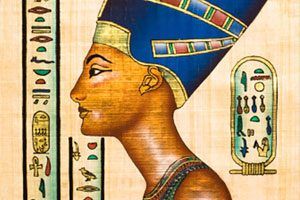
Rainforest habitat primary resource
Explore the fascinating features of a rainforest habitat
This primary resource introduces children to life in the rainforest. Discover the features of a rainforest habitat. How much rain does a rainforest receive each year? Which animals make their homes in the rainforest? What portion of the Earth’s land surface does the rainforest cover?
Pupils will learn about different kinds of creatures that live in the rainforest and the conditions that they require of their habitat in our National Geographic Kids’ Science primary resource sheet.
The teaching resource can be used in study group tasks for discussion about what creatures live in the rainforest, and how they are adapted to do so. It could be used as a printed handout for each pupil to review and annotate, or for display on the interactive whiteboard using the images included in the resource for class discussion.
Activity: Ask children to use the facts provided and their own research to write a rainforest fact sheet of their own. Pupils could choose one of the facts to research further and write a report on (i.e. using the fact ‘80% of the flowers in the Australian rainforests are not found anywhere else in the world’, pupils could write a report on why that is the case, looking at the features and adaptations of rainforest plants).
N.B. The following information for mapping the resource documents to the school curriculum is specifically tailored to the English National Curriculum and Scottish Curriculum for Excellence. We are currently working to bring specifically tailored curriculum resource links for our other territories; including South Africa, Australia and New Zealand. If you have any queries about our upcoming curriculum resource links, please email: schools@ngkids.co.uk
This Science primary resource assists with teaching the following Key Stage 1 Science (Year 2) objectives from the National Curriculum:
Pupils should be taught to:
- identify that most living things live in habitats to which they are suited and describe how different habitats provide for the basic needs of different kinds of animals and plants, and how they depend on each other
- identify and name a variety of plants and animals in their habitats, including micro- habitats
National Curriculum Lower Key Stage 2 Science (Year 4) objectives:
Pupils should be taught to:
- recognise that living things can be grouped in a variety of ways
- recognise that environments can change and that this can sometimes pose dangers to living things.
Pupils should use the local environment throughout the year to raise and answer questions that help them to identify and study plants and animals in their habitat. They should identify how the habitat changes throughout the year.
This Science primary resource assists with teaching the following Sciences Early level objectives from the Scottish Curriculum for Excellence:
- I have observed living things in the environment over time and am becoming aware of how they depend on each other
Scottish Curriculum for Excellence Sciences Third level objectives:
- I can sample and identify living things from different habitats to compare their biodiversity and can suggest reasons for their distribution
Scottish Curriculum for Excellence Sciences Fourth level objectives:
- I understand how animal and plant species depend on each other and how living things are adapted for survival. I can predict the impact of population growth and natural hazards on biodiversity
Download primary resource
More Like

Did Cleopatra really die from a snake bite?

Tim Peake interview!

Meet Earthshot prize finalist, Vinisha!









LEAVE A COMMENT
THANK YOU
Your comment will be checked and approved shortly.
WELL DONE,
YOUR COMMENT
HAS BEEN ADDED!
COMMENTS
CUSTOMIZE YOUR AVATAR